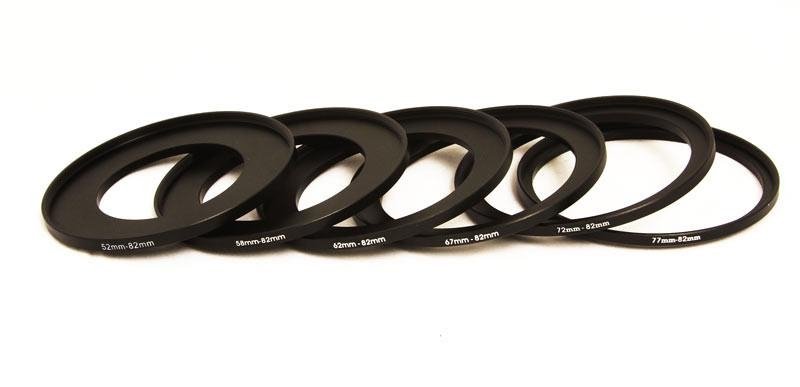Mastering Photography Filters: Elevating Your Visual Storytelling Journey
Introduction
Welcome to the enchanting world of photography filters, where creativity meets technical finesse to craft mesmerizing visual narratives. In today's age of versatile imaging devices, filters are not just exclusive to traditional camera lenses but also find their place in the realms of mobile smartphones and drones. Whether you wield a DSLR, a mirrorless marvel, the lens of your smartphone, or the aerial perspective of a drone, understanding the diverse array of filters at your disposal is akin to unlocking a treasure trove of artistic possibilities. In this comprehensive exploration, we'll delve deeper into the realm of photography filters, unraveling their myriad uses, advantages, disadvantages, and indispensable tips for selecting the perfect filter to complement your vision, regardless of the device at hand.
Drone Filter
Types of Photography Filters:
UV Filters:
Use: Beyond its primary role as a protective shield for your lens, UV filters excel in enhancing image clarity, particularly in distant landscapes, by minimizing atmospheric haze.
Advantages: Safeguards your lens against scratches, dust, and moisture without compromising image quality, making it an essential accessory for outdoor photography.
Disadvantages: While proponents argue for its efficacy in lens protection, skeptics debate its impact on image sharpness and the potential for introducing unwanted flare, especially in backlit conditions.
Polarizing Filters (CPL):
Use: A magician's wand for landscape photographers, polarizing filters work wonders in intensifying colors, reducing glare, and enhancing contrast by selectively blocking polarized light.
Advantages: From deepening blue skies to eliminating reflections on water surfaces and glass, polarizing filters elevate the vibrancy and clarity of outdoor scenes, imbuing them with a surreal, almost cinematic allure.
Disadvantages: Careful adjustment is paramount to avoid uneven darkening of the sky, and while the filter enhances visual impact, it also diminishes the amount of light entering the lens, necessitating longer exposure times.
Polarized Filter
Neutral Density (ND) Filters:
Use: In the realm of long-exposure photography, ND filters reign supreme, offering control over exposure by attenuating the amount of light reaching the camera sensor, thus enabling captivating visual effects even in broad daylight.
Advantages: Whether it's capturing silky waterfalls, ethereal cloud movements, or evocative urban scenes with blurred motion, ND filters empower photographers to unleash their creativity and transcend the constraints of conventional exposure settings.
Disadvantages: Mastery of exposure settings and patience are prerequisites, as achieving the desired effect often entails trial and error; moreover, extreme ND filters may introduce color casts, necessitating post-processing correction.
Mobile ND filter
Graduated Neutral Density (GND) Filters:
Use: When faced with challenging lighting conditions, such as a bright sky juxtaposed against a darker foreground, graduated neutral density filters emerge as indispensable allies, seamlessly balancing exposure across the frame.
Advantages: By selectively reducing the intensity of light in specific areas of the image, GND filters preserve detail in both highlight and shadow regions, ensuring a harmonious tonal range and preventing unsightly overexposure or underexposure.
Disadvantages: Precision is paramount in positioning the transition zone of the filter to align with the horizon or desired boundary, as misalignment can result in unnatural-looking gradients; moreover, the effect is fixed and may not suit every scene.
Graduated filter
Night Pollution Filters:
Use: In urban environments plagued by light pollution, night pollution filters act as a shield against extraneous light sources, allowing astrophotographers and nightscapers to capture clearer, more vivid images of the celestial heavens.
Advantages: By selectively blocking specific wavelengths of light associated with urban lighting, night pollution filters enhance contrast and reduce atmospheric haze, revealing intricate details of the night sky.
Disadvantages: While effective in mitigating light pollution, night pollution filters may also attenuate certain wavelengths of starlight, requiring careful calibration to achieve optimal results; moreover, they are less effective in heavily light-polluted areas.
Mist Filters:
Use: Mist filters infuse scenes with a dreamlike, ethereal quality by diffusing light and softening harsh edges, ideal for portrait and landscape photography where a sense of mystique and romanticism is desired.
Advantages: By imparting a soft, glowing effect to highlights and reducing the appearance of imperfections, mist filters add a touch of enchantment to images, enhancing their emotive impact and aesthetic appeal.
Disadvantages: The degree of mistiness may vary depending on the filter's intensity, potentially obscuring fine details and reducing overall image sharpness; moreover, excessive use can lead to a loss of clarity and definition.
Advice on Lens Diameter
As you embark on your quest for the perfect photography filter, navigating the labyrinth of lens diameters can be a daunting task. Fear not, for a sage piece of advice awaits: harmonize your filter collection with the largest lens diameter in your arsenal. By investing in filters that match this diameter, or employing step-up rings to adapt smaller filters to larger lenses, you ensure compatibility and versatility without sacrificing image quality or succumbing to the siren song of vignetting.
82mm Filter Step Up Ring Set
Conclusion
Photography filters are not mere accessories; they are catalysts for transcendent visual storytelling. Armed with the knowledge of their diverse applications, advantages, and disadvantages, you possess the keys to unlock boundless creative potential across a myriad of devices. As you embark on your photographic odyssey, remember to choose your filters wisely, let your imagination soar, and paint your narrative on the canvas of light. With each click of the shutter, you embark on a journey of discovery, where every filter becomes a brushstroke, and every image a masterpiece, whether captured through the lens of a traditional camera, the lens of your smartphone, or the aerial perspective of a drone.






